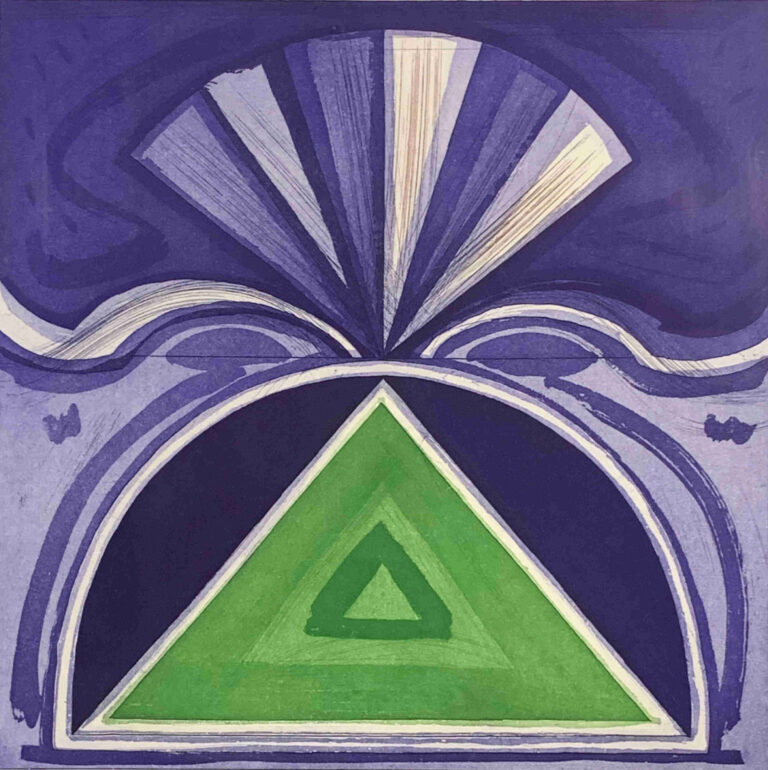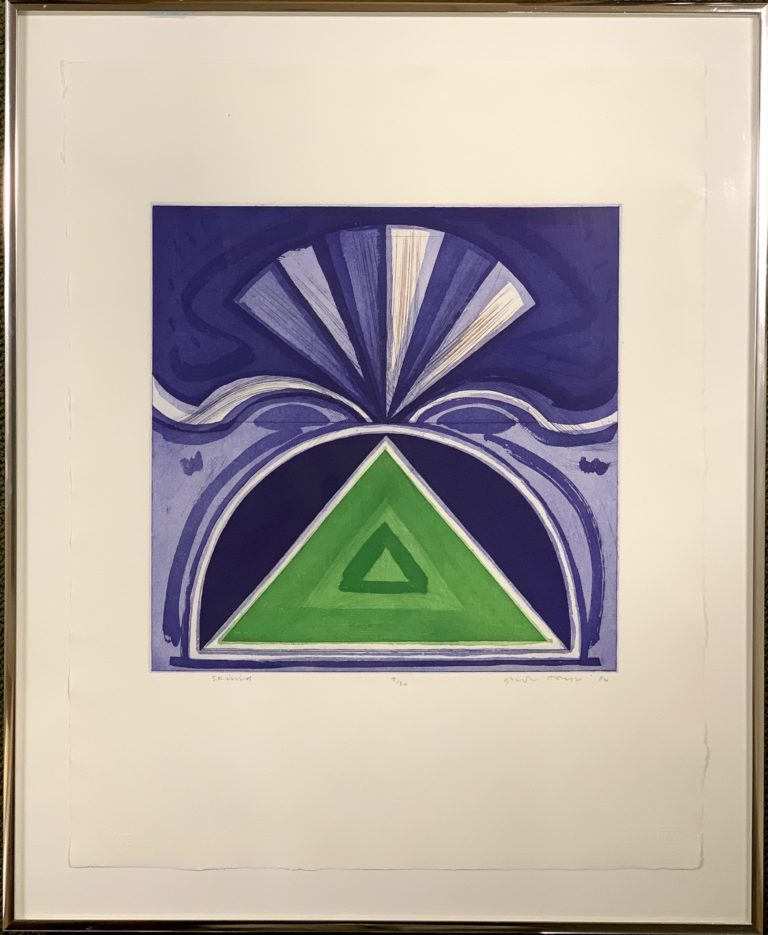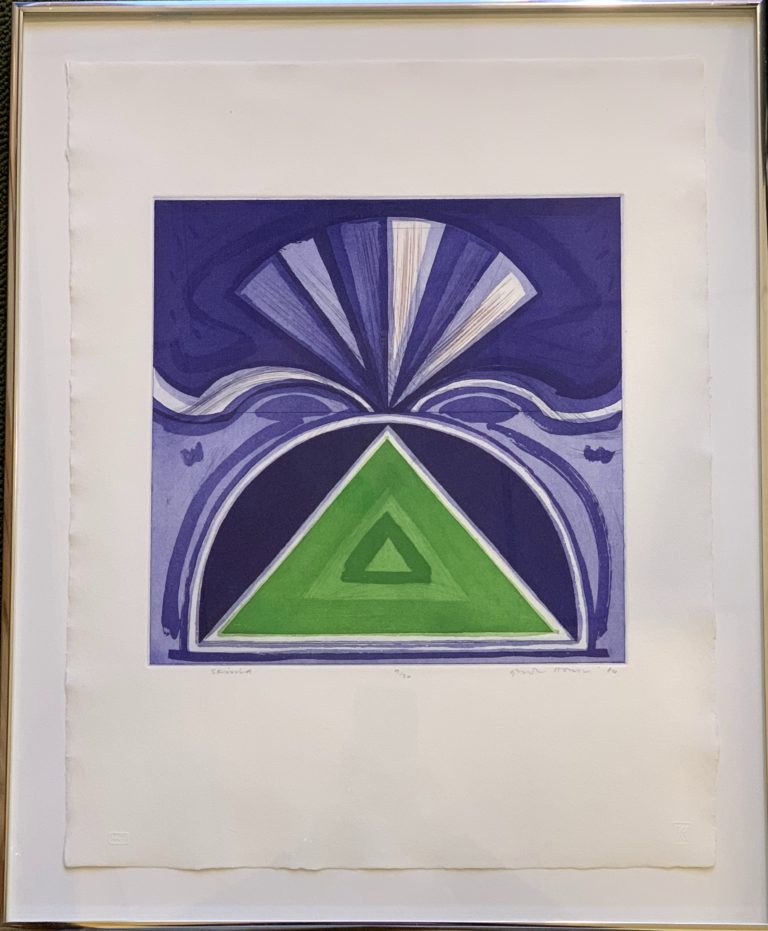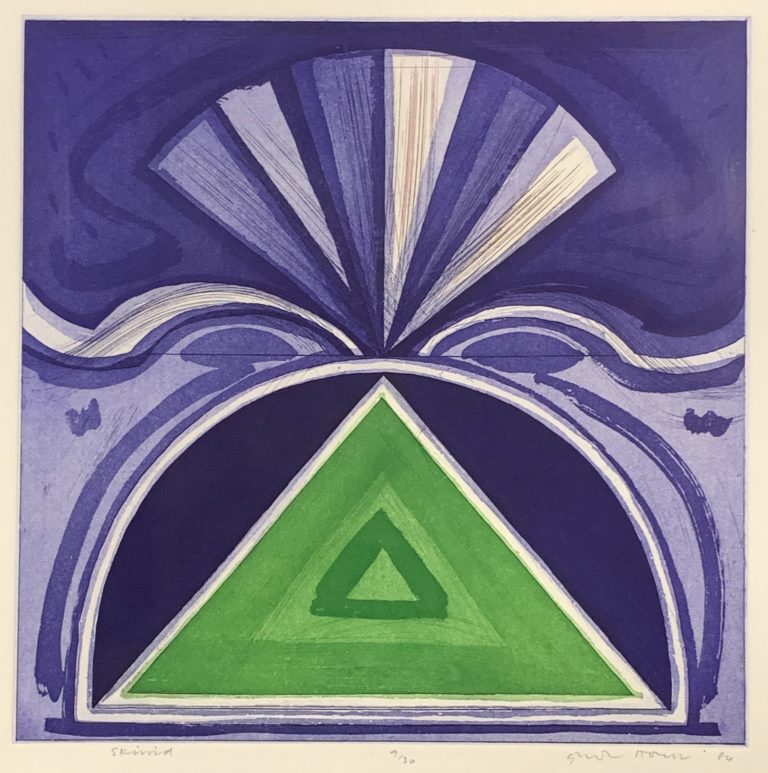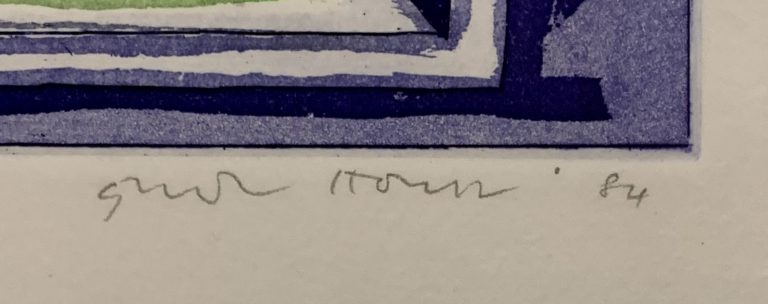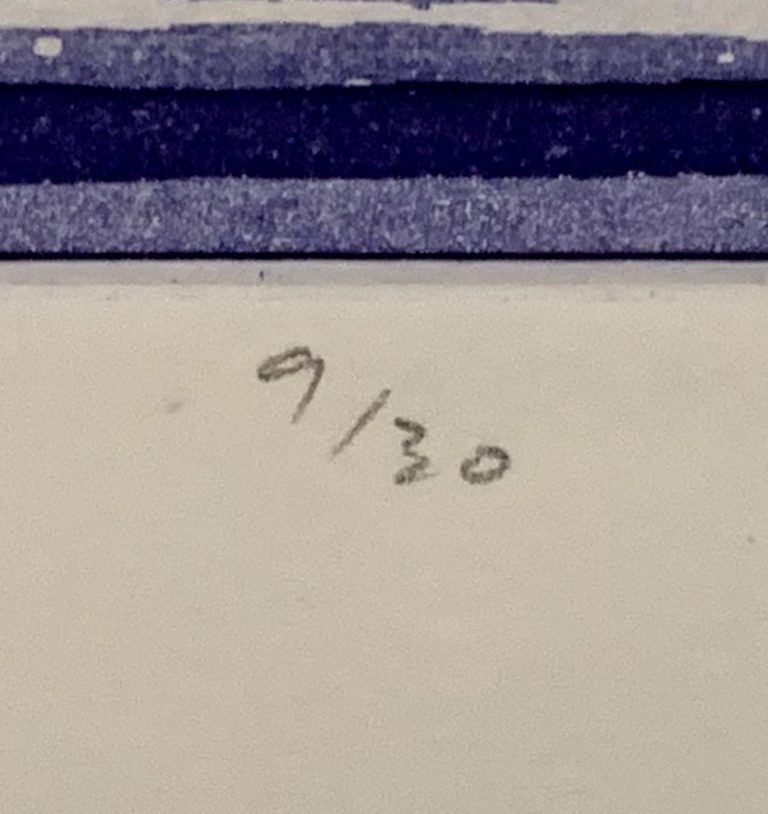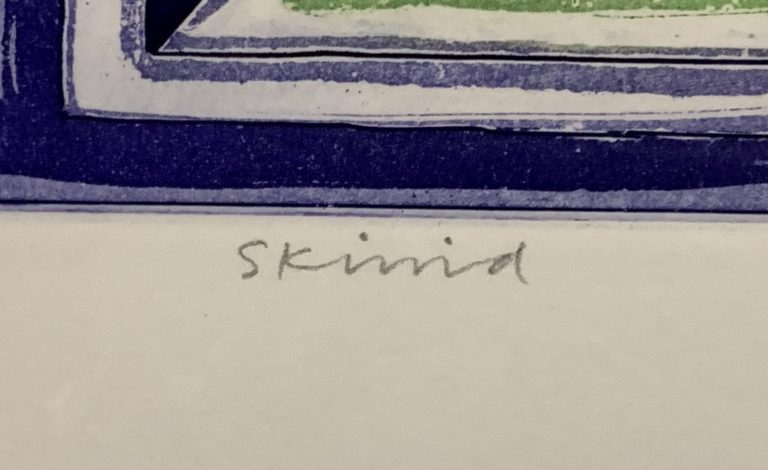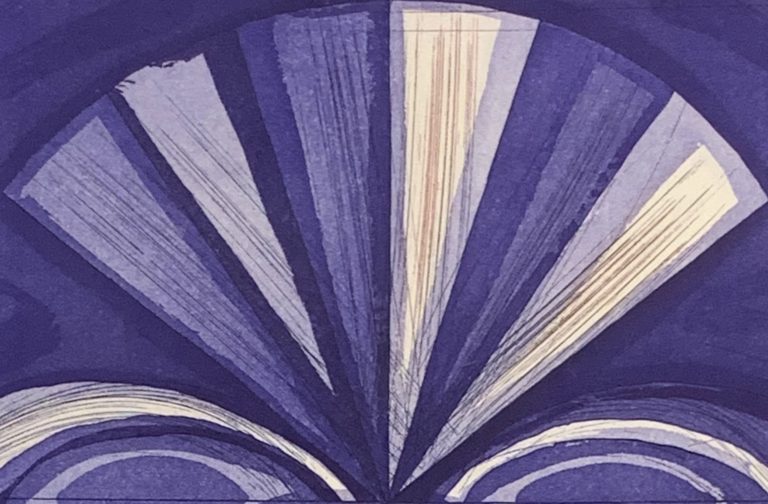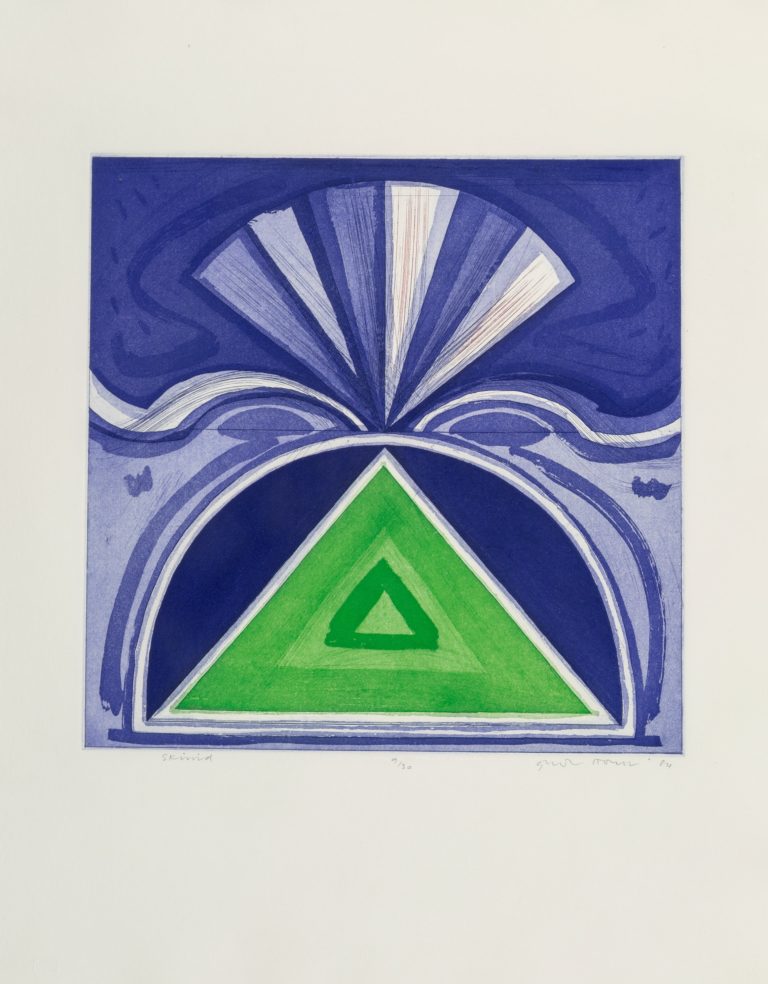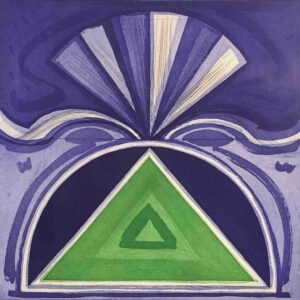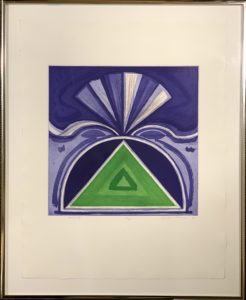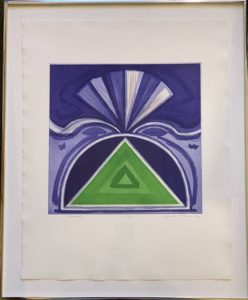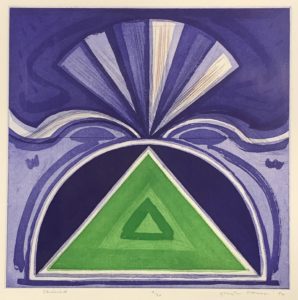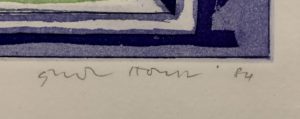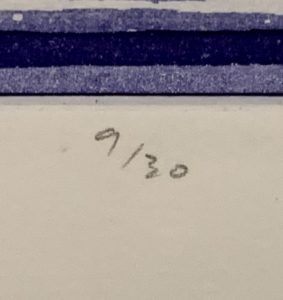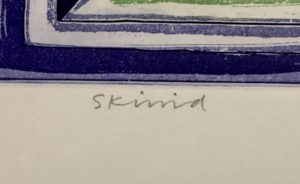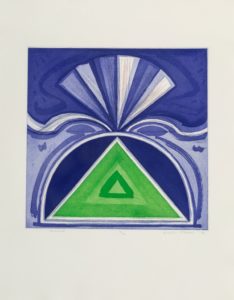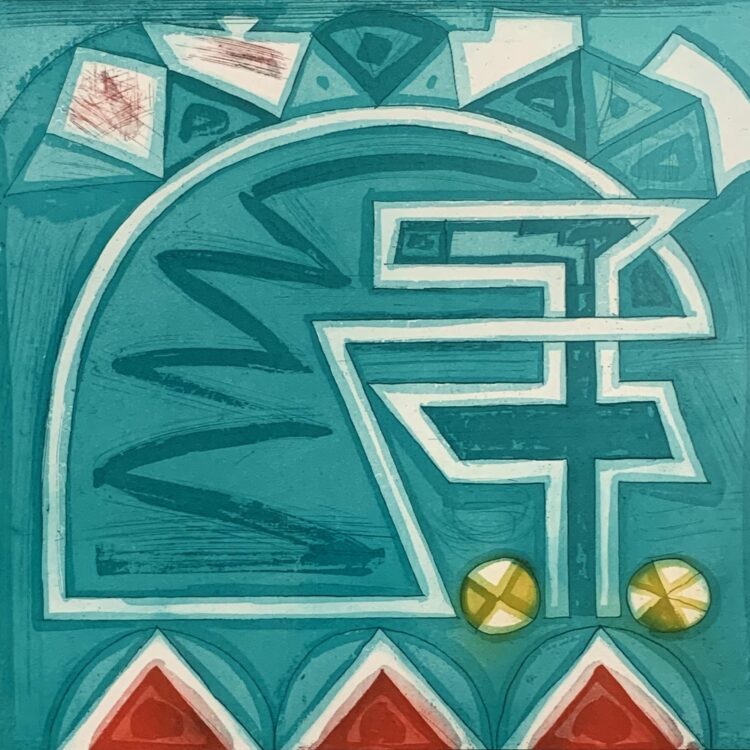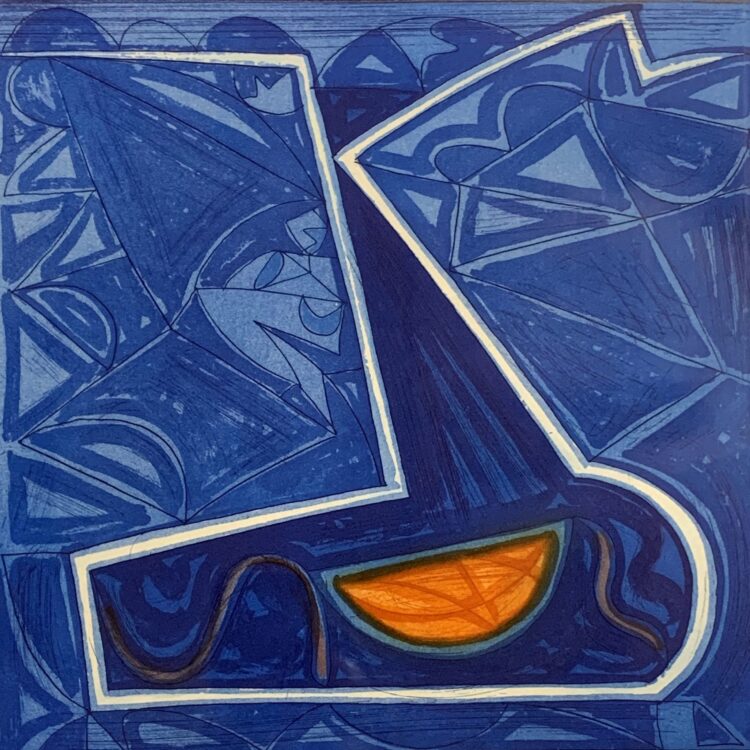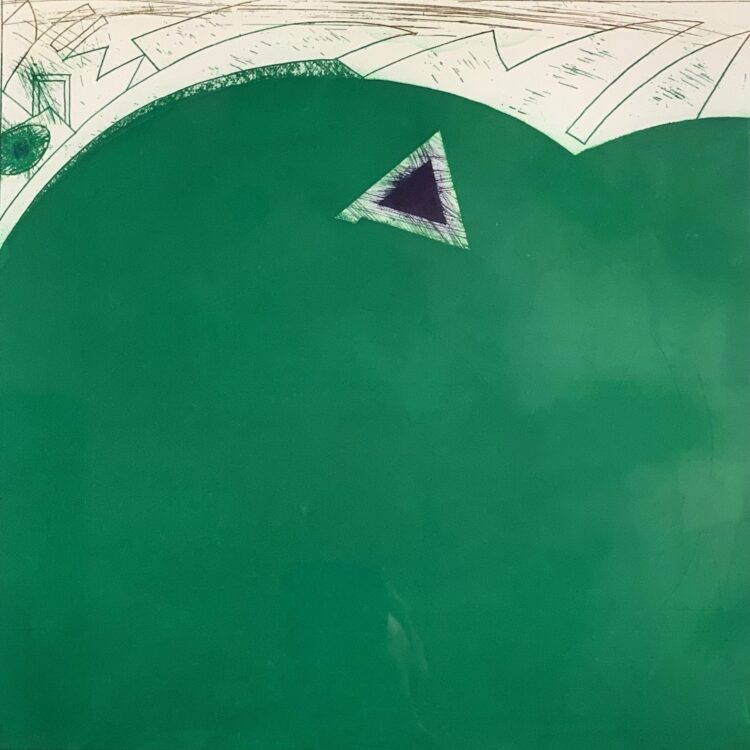Description
The Washington Color Gallery focuses on Washington Color School and related artists, along with works by great printmakers. This work by the great printmaker Gordon House is a fine example of truly excellent print-making, though it depicts a world far from Washington, D.C. It weaves together compelling imagery, history, technical prowess, and imagination to create a work of beauty.
House was born in Wales but lived and worked in London all his adult life. Nevertheless, he always held a deep attachment to his native Wales. He once wrote, “On leaving the valley of my origin there has always been that pull to return.” In 1975, House bought a house in Penrhos on the Welsh borders which he visited nearly every weekend for the following decade. He described:
The landscape from the house, which was raised above the fields sloping away, was probably as it had been for hundreds of years. To me it was even reminiscent of the background landscapes seen in Italian Renaissance paintings. In the distance one could see the higher, familiar ground, the beginning of the Brecon Beacons. Blorenge, Sugarloaf and Skirrid. Not quite as my childhood memories of the hilly Wales surrounding the industrial black valley further south, but for me it was still Wales.
The local landscape and the characters he met there, his memories from childhood and the area’s historical and mythical past all found expression in many of House’s paintings and prints, but most notably in The Welsh Portfolio, from which this print comes.
The happy green color that dominates this picture reflects the pleasant and relaxing sea-front area of Mumbles on the southern coast of Wales. The title of this work, “Mumbles (Dylan)”, is a plain reference to the writer Dylan Thomas, who was born and raised in Swansea, the city which sits astride Swansea Bay depicted in this print. A peninsula juts out into the bay, pointing at the large rocks which rise up out of the ocean. Those rocks, which are known as the Mumbles Rocks, give the area its local nickname. One of the largest of those rocks is the pediment of an old lighthouse, which warns boats away from the treacherous rocks.
